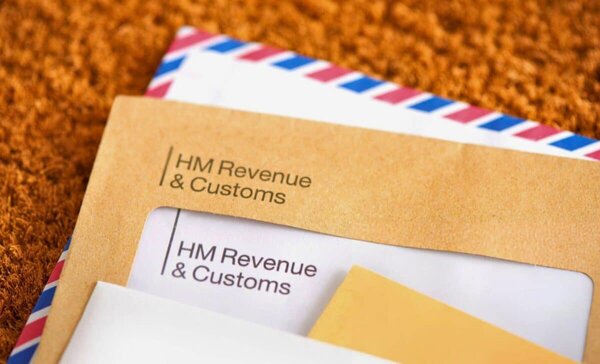Selling on Online Platforms
Selling on online platforms like Vinted, eBay, and Etsy has become a go-to way for people across the UK to make extra money or clear out unwanted items.
With the rise of digital platforms, it’s easier than ever to turn your personal possessions into cash, whether you’re selling personal items, providing services online, or even starting a small trading venture.
But as online marketplaces grow, so do the rules around when you need to pay tax on your earnings. Understanding if and when you need to pay tax is crucial, whether you’re just selling personal possessions or running a side hustle.
The UK tax system offers a trading allowance to help casual sellers, but there are also rules around capital gains tax and self assessment tax returns that you need to be aware of. In this guide, we’ll break down what you need to know about selling on online platforms, so you can stay on the right side of HMRC and avoid any unexpected tax bills.
Selling Personal Possessions vs. Trading: What’s the Difference?
One of the most important things to understand when selling on online platforms is the difference between selling personal possessions and trading as a business.
If you’re simply selling unwanted clothes or other personal items you already own, this is generally not considered trading, and you won’t usually need to pay income tax on the money you make. These types of sales are seen as selling personal possessions, and for most people, they’re not taxable.
However, if you start buying items specifically to resell them, or if you’re selling goods regularly and making a profit, HMRC may view you as a business seller. In this case, you may need to pay tax on your profits and complete a self assessment tax return.
The trading allowance gives you a tax-free buffer of £1,000 per year for casual sales, but if your profits go over this amount, you’ll need to declare your income and pay any tax due.
If you’re unsure whether your selling counts as trading, think about your intention, how often you sell, and whether you’re buying items just to resell. Keeping clear records of your sales and costs will help you decide if you need to pay tax and make completing your tax return much easier if required.
The £1,000 Trading Allowance: Your Tax-Free Buffer
The most important thing to understand is the Trading Allowance, a £1,000 tax-free buffer for casual sellers. This means you can make up to £1,000 profit from Vinted sales in a tax year without paying a penny in tax. Note that a tax year runs from 6 April to 5 April the following year, which is different from the calendar year (January to December).
This allowance covers your profits (what you receive minus the cost of what you paid for the items), not just your total sales. So if you’re selling old clothes for less than you bought them for, you’re likely not making a taxable profit at all. When tracking your sales, keep an eye on your sales figures to ensure you don't exceed the allowance.
The Trading Allowance applies across all your casual trading activities combined, not just Vinted. If you also sell on eBay or Depop, you’ll need to add all these earnings together to calculate your total income.

When Does Vinted Selling Become Taxable?
HMRC distinguishes between occasionally selling personal items (not taxable) and trading (potentially taxable). But how can you tell the difference? If you’re simply selling clothes you’ve worn and no longer want, at prices lower than you paid, this is generally considered non-taxable personal selling.
Things start looking more like trading when you buy items specifically to sell them for profit. This is considered engaging in trade. Regular and frequent sales, significant profits, or large volumes can also mean your sales may be taxed.
For example, if you’re buying bulk clothing to resell, HMRC might consider this trading activity. If this is considered trading, you may be required to pay taxes on your profits. I learned this the hard way when my weekend car boot finds became a profitable side hustle, pushing me over the threshold. If HMRC considers you a business seller, you may be liable for taxes such as Income Tax and National Insurance on your profits.
Once you cross the threshold and become taxable, paying tax involves registering with HMRC, keeping records, and submitting a Self Assessment tax return. If you are considered a business seller, it is important to declare income to HMRC to avoid penalties and ensure compliance.
Do I Need to Register as Self-Employed?
If your Vinted profits exceed the £1,000 Trading Allowance, you’ll need to register for Self Assessment and file a tax return. Many Vinted sellers choose to register as a sole trader, which means you run your business as an individual and keep all profits after tax, but are personally responsible for any losses.
Registration deadlines matter, you must register by 5th October after the tax year in which you exceeded the allowance. The tax year runs from 6th April to 5th April the following year. Missing registration deadlines can result in penalties, so it’s worth keeping an eye on your sales totals throughout the year.
Even if you’re already employed elsewhere, you still need to register as self-employed if your side hustle exceeds the allowance. HMRC considers individuals who regularly sell items online for profit as online traders, and these online traders are required to register and report their income.
Once registered as self-employed, you must meet certain reporting requirements, including submitting an annual tax return and keeping accurate records of your sales and expenses.
Capital Gains Tax: Does It Apply to Vinted Sales?
Capital gains tax (CGT) is a tax on the profit you make when you sell certain valuable assets, such as property, shares, or high-value personal items. For most Vinted sellers, CGT won’t apply, as it only affects personal possessions sold for more than £6,000. If you sell an item on Vinted for less than this amount, or if you make a loss, you won’t need to pay capital gains tax.
However, if you do sell a personal item for more than £6,000 and make a profit, you may need to pay CGT, especially if your total gains for the tax year exceed the annual CGT allowance. Business sellers should also be aware that selling business assets, like stock or equipment, could trigger a capital gain and a potential tax bill.
To stay compliant, keep detailed records of your sales, including how much you paid for each item and any expenses related to the sale. This will help you work out if you need to pay capital gains tax and make it easier to report your figures accurately to HMRC if required. If you’re ever unsure about your tax position, it’s always a good idea to seek advice or review HMRC’s guidance on selling personal possessions and capital gains.

Keeping Records of Your Vinted Sales
Good record-keeping is essential, even if you’re below the Trading Allowance. HMRC can ask for evidence going back several years.
At minimum, keep records of all your sales, screenshots of completed transactions work well. Tracking accurate sales data is important for tax purposes, as it helps ensure you report your income correctly. Try to document what you originally paid for items if possible. Be sure to record the details of each transaction, including dates and amounts.
Also track any expenses related to your selling, such as packaging or postage costs you cover. Don’t forget to note Vinted fees and postage protection costs. A simple spreadsheet can work wonders for tracking your sales. Update it monthly so you’ll know when you’re approaching the £1,000 threshold.
Common Tax Mistakes Vinted Sellers Make
The biggest mistake is assuming all personal item sales are automatically tax-free. While selling your own used clothes typically won’t trigger tax liability, volume and profit matter.
It’s important to note that recent changes are not a new tax, but rather new reporting requirements. Online platforms are now required to report seller income to HMRC starting in 2024, so sellers should be aware of these updated rules.
Another common error is failing to keep records. Even if you’re sure you’re below the threshold, having evidence makes life much easier if HMRC ever asks questions. Many sellers forget that the Trading Allowance covers profit, not revenue.
If you bought a dress for £50 and sold it for £30, you’ve made a loss, not a profit. Missing registration deadlines can lead to penalties that far exceed any tax you might owe. If you exceed the threshold, you must tell HMRC about your income. Set calendar reminders if you’re approaching the threshold.
Final Thoughts
For most casual Vinted sellers clearing out their wardrobes, tax won't be an issue. The £1,000 Trading Allowance provides a generous buffer for occasional selling.
If your Vinted hobby grows into something more substantial, keep good records and register with HMRC when needed. The tax rules aren't designed to catch you out, they're there to ensure everyone pays their fair share. When in doubt, track your sales carefully and consider speaking to a tax professional if your Vinted income starts looking significant.
Pie: Simplifying Vinted Seller Tax Obligations
Tax rules for online selling shouldn’t give you a headache. Pie makes tracking your Vinted income straightforward with our user-friendly dashboard built specifically for side hustlers. Vinted is an online platform where you can sell clothes and other items, making it important to understand the tax implications of your sales.
Our real-time tax calculator shows exactly where you stand with your Trading Allowance at any point in the year. We can connect directly to your bank accounts to categorise your income and expenses. The app helps you see how much income you generate from selling on the platform.
As the UK’s first personal tax app, we understand the unique challenges of balancing casual selling with tax compliance. Pop over to our website if you’d like to see how we can make your Vinted tax worries disappear.

Your Step-by-Step Guide
Follow these easy steps to ensure your tax reliefs are accurately recorded for your self-assessment:
Connect your bank account, tap ‘Bookkeeping’ on the navigation bar, and swipe right on eligible transactions to move them to the ‘Income’ tab. Use multi-select or double-tap to sort multiple expenses quickly.Adding Income By Bookkeeping

Use the ‘Quick Add’ feature to manually enter any additional income or expenses not found in your bank transactions for your self-assessment.Adding Income Manually












